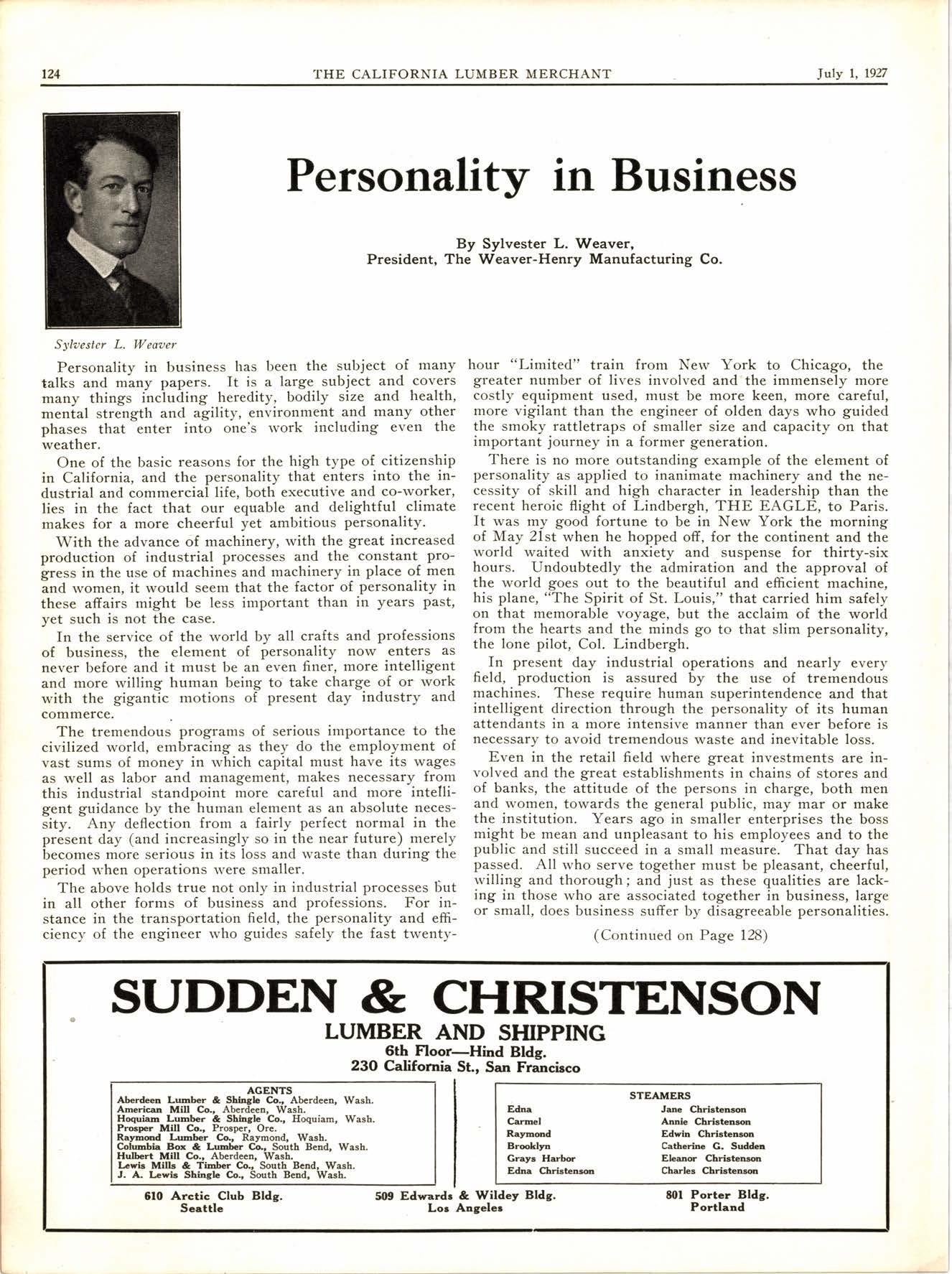
2 minute read
One Hundred Years of Building and Loan
By Frank M. Wise, Secretary United States Building & Loan Association, Los Angeles
(Mr. Wise was formerly connected with the lumber business for many years, and prior to his association with the United States Building & Loan, was sales manager for the Patten & Davies Lumber Co.).
Part I
On the evening of January 3, 1831, thirty-eight sturdy citizens of the city of Brotherly Love, Philadelphia, met at the public-house of one Thomas Sidebotham, which still stands at 4217 Frankford Avenue, to discuss rvays and means of acquiring homes of their orvn. Thrifty, homeloving, industrious, the will to provide more than a bare living for their families was there; but striving alone, as individuals, the way was difficult.
At that meeting, an agreement was reached, similar to the English home-building clubs of the time, which bound each one of them to pay five dollars on each five hundred dollar unit subscribed for, and three dollars each month thereafter until the total savings, plus accumulated profits would amount to five hundred dollars. In those days, this sum was sufficient to purchase or build a home suitable for men of their means.
The Board of Trustees, thirteen in number, served without compensation, and the Secretary used his home for his office, and was voted a salary.of fifteen dollars PER ANNUM. Ten years later, this was increased to twenty dollars yearly.
Thus at least two of the fundamental principles of building and loan were established. Fiist, the encouragement of thrift; second, economy in the operation of the association, itself. These principles, improved upon and refined, of course, still remain as two of the foundation stones of all modern associations.
The members of that first group never dreamed of the extent to which their idea was latei to be developed. They made no provision for the continuation of their savings and loan plan after the expiration of the original agreement. The only solution was to draw up another pact and start over again.
At any rate, the building and loan idea was born, limited in scope though it was. And it did not take men long to find rvays and means to broaden the practical application and working of the original plan.
I shall trace the development through all of its various interesting phases up to the modern association, of which the "United States" is a splendid example. Instead of one plan which all must follow, we now have half a dozen, some of which is suitable to.the needs of everybody, whether he has one dollar a week to save, or one hundred thousand dollars to invest for a long term.
Instead of the necessity of waiting for enough money to accumulate in the treasury before obtaining a loan, hundreds of thousands of dollars are now available at all times.
The fundamental accepting of moriey from savers and investors on the one hand, and loaning it out to borrowers on the other hand, now requires many and varied facilities. Modern associations like the "IJnited States" provide these and render a highly specialized service meeting a special need in a way unequalled by any other type of financial institution.
Part Ii
Although the Early Building and Loan Associations firmly established the cardinal principles of thrift, economy, and systematic saving, their structures were necessarily crude. Prior to 185O they were loosely organized and seldom incorporated, usually conbisting of not more than one hundred carefully chosen friends or acquaintances.
The saving members went along together, saving equal amounts each week or month, until their savings and profits amounted to a definite pre-determined sum of money. The borrowing members made their loans as rapidly as the accumulation of treasury funds would permit, and immediately began systematic repayment, also on a weekly or monthly basis, as the case might be. When the loans rvere finally paid off, the borrowers recei'r'ed their cancelled mortgages and the savers received the money they had paid
(Continued on Page 127)
H. P. Diron










